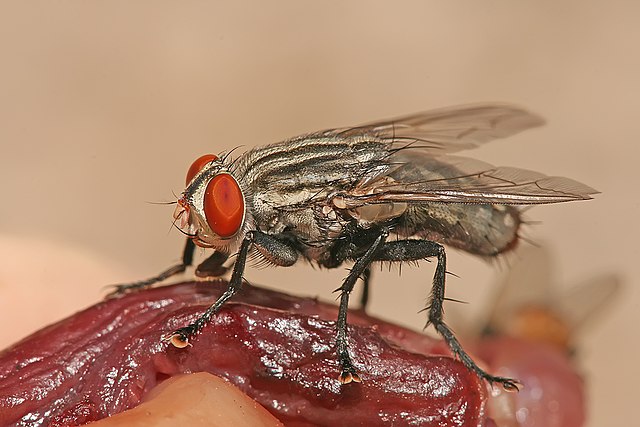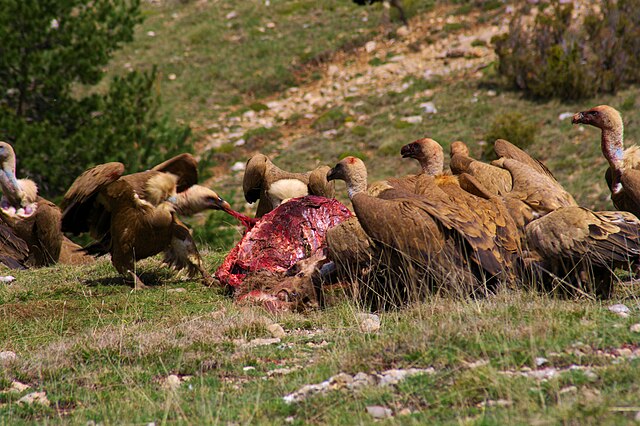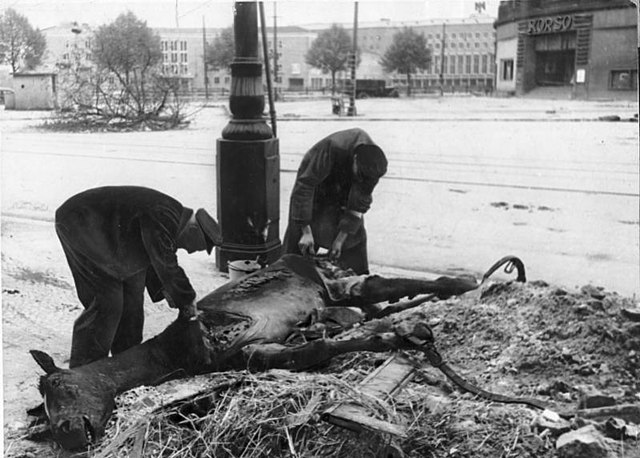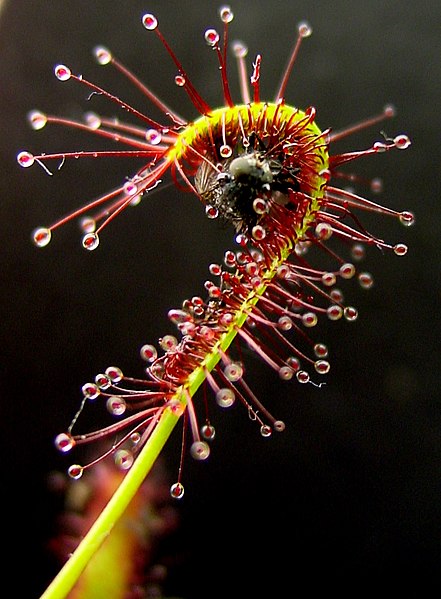Scavengers are animals that consume dead organisms that have died from causes other than predation or have been killed by other predators. While scavenging generally refers to carnivores feeding on carrion, it is also a herbivorous feeding behavior. Scavengers play an important role in the ecosystem by consuming dead animal and plant material. Decomposers and detritivores complete this process, by consuming the remains left by scavengers.
Sarcophaga nodosa, a species of flesh fly, feeding on decaying meat
White-backed vulture (Gyps africanus), lappet-faced vultures (Torgos tracheliotos) and marabou storks (Leptoptilos crumenifer) feeding on a dead spotted hyena (Crocuta crocuta).
Griffon vultures (Gyps fulvus) eating the carcass of a red deer in Spain
Men scavenging a dead horse during World War II (at the end of the Battle of Berlin), on Manfred-von-Richthofen-Straße in Tempelhof borough, 1945
Predation is a biological interaction where one organism, the predator, kills and eats another organism, its prey. It is one of a family of common feeding behaviours that includes parasitism and micropredation and parasitoidism. It is distinct from scavenging on dead prey, though many predators also scavenge; it overlaps with herbivory, as seed predators and destructive frugivores are predators.
Solitary predator: a polar bear feeds on a bearded seal it has killed.
Social predators: meat ants cooperate to feed on a cicada far larger than themselves.
Spider wasps paralyse and eventually kill their hosts, but are considered parasitoids, not predators.
Carnivorous plant: sundew engulfing an insect








